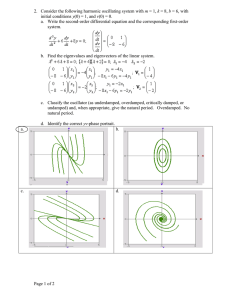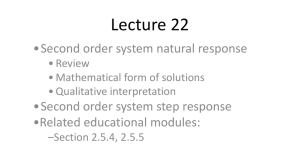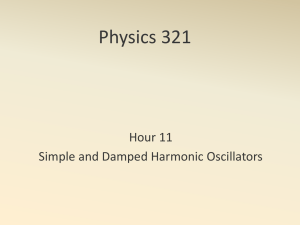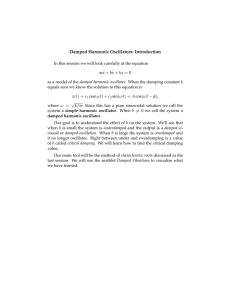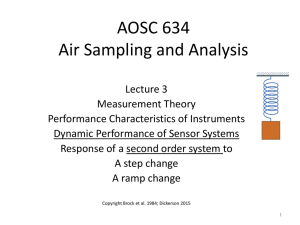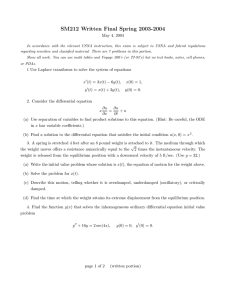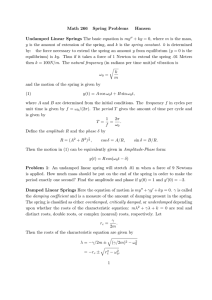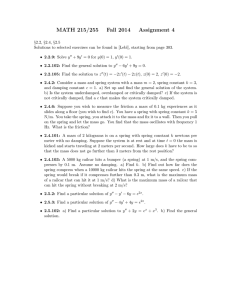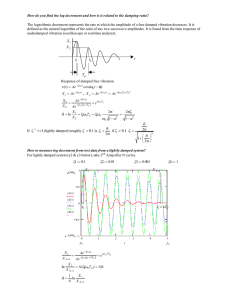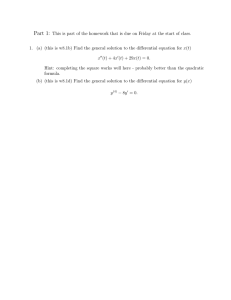Math 2250 Lab 9 Name/Unid: Due Date: 3/20/2014 Class ID:
advertisement
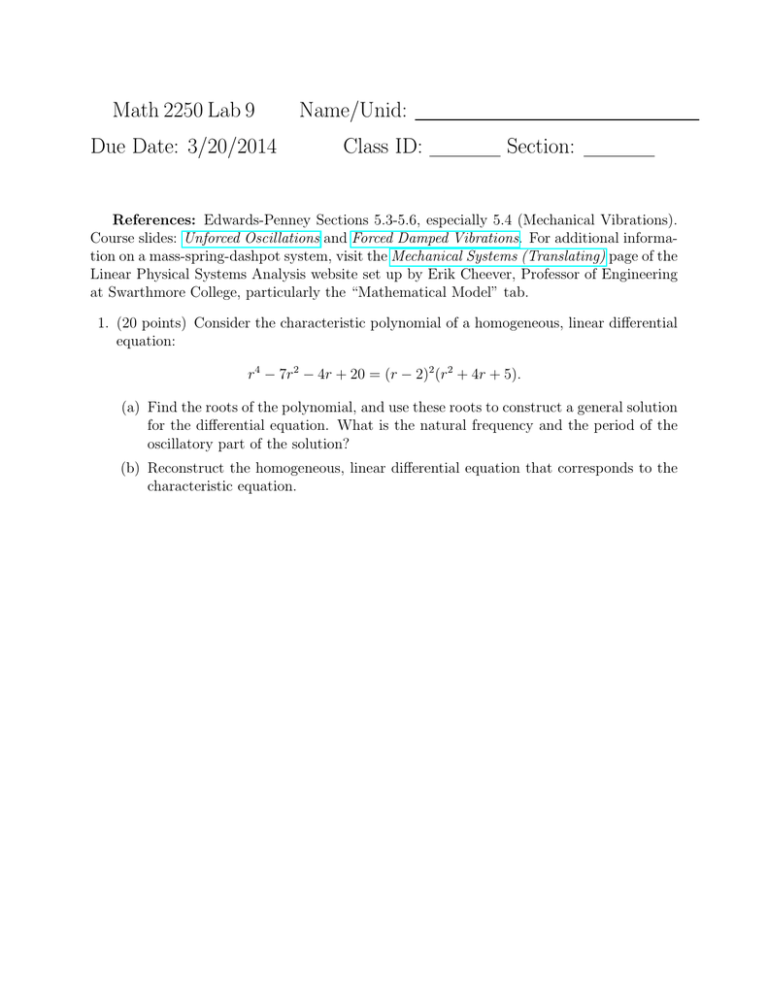
Math 2250 Lab 9 Due Date: 3/20/2014 Name/Unid: Class ID: Section: References: Edwards-Penney Sections 5.3-5.6, especially 5.4 (Mechanical Vibrations). Course slides: Unforced Oscillations and Forced Damped Vibrations. For additional information on a mass-spring-dashpot system, visit the Mechanical Systems (Translating) page of the Linear Physical Systems Analysis website set up by Erik Cheever, Professor of Engineering at Swarthmore College, particularly the “Mathematical Model” tab. 1. (20 points) Consider the characteristic polynomial of a homogeneous, linear differential equation: r4 − 7r2 − 4r + 20 = (r − 2)2 (r2 + 4r + 5). (a) Find the roots of the polynomial, and use these roots to construct a general solution for the differential equation. What is the natural frequency and the period of the oscillatory part of the solution? (b) Reconstruct the homogeneous, linear differential equation that corresponds to the characteristic equation. 2. (80 points) The figure below depicts a typical mass-spring-dashpot system; here, m denotes the kilogram mass of the oscillating object, k denotes the spring constant in Newtons/meter, and c denotes the damping constant. We use x(t) to denote the position of the mass at time t (with x = 0 being its equilibrium position); positive directions of x imply the mass is to the right of its equilibrium position. Throughout, we fix the values m = 2 and k = 16. However, we will vary the damping constant c to find qualitatively different solutions. Throughout this problem, IVP will refer to the initial value problem 2x00 + cx0 + 16x = 0, √ x(0) = 2 and x0 (0) = 2 2 Figure 1: (a) Give details for how the differential equation was determined, starting with a reference for the damped spring-mass system. (b) For what values of c ≥ 0 is the differential equation 1. 2. 3. 4. Undamped Overdamped Underdamped Critically damped (c) Solve the IVP when there is no damping. After finding your solution in linear combination form, convert into amplitude-phase form. Identify the numerical values for amplitude, phase angle, and time delay. (d) Solve for the general solution when c = 8. The classification is underdamped, because the discriminant of 2r2 + 8r + 16 = 0 is negative. √ (e) Find the general solution for when √ c = 128. The classification is critically damped, because the discriminant of 2r2 + 128r + 16 = 0 is zero. (f) Finally, solve for the general solution when c = 12. The classification is overdamped, because the discriminant of 2r2 + 12r + 16 = 0 is positive. Page 2 Page 3 Page 4
